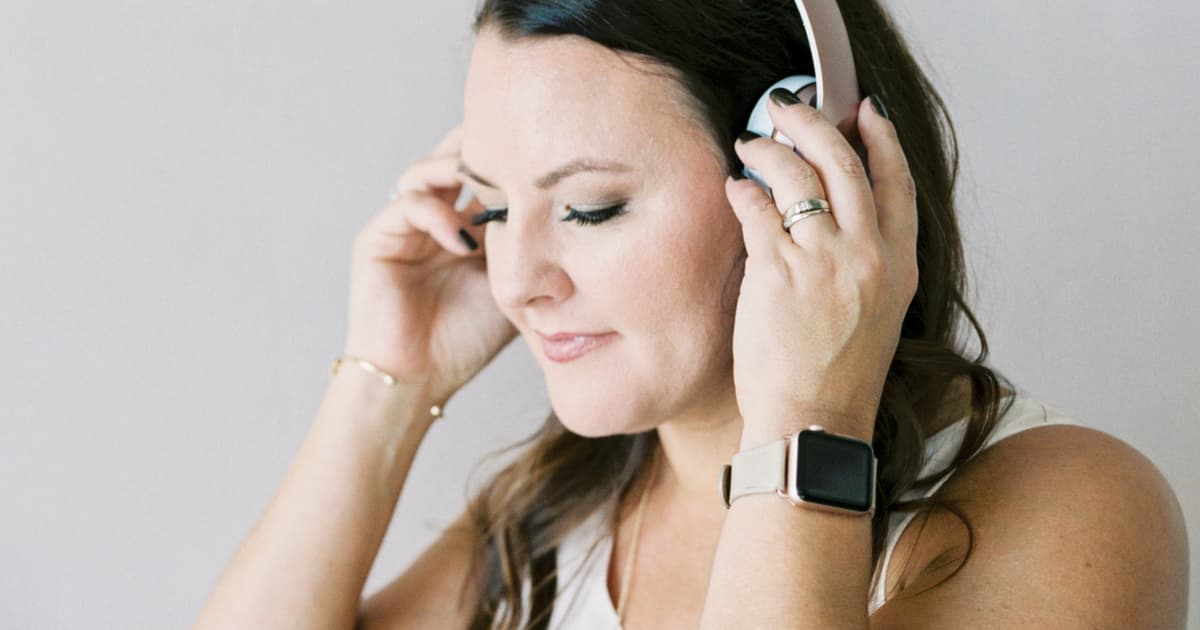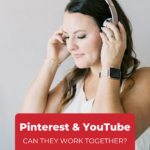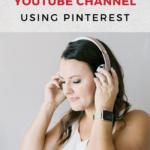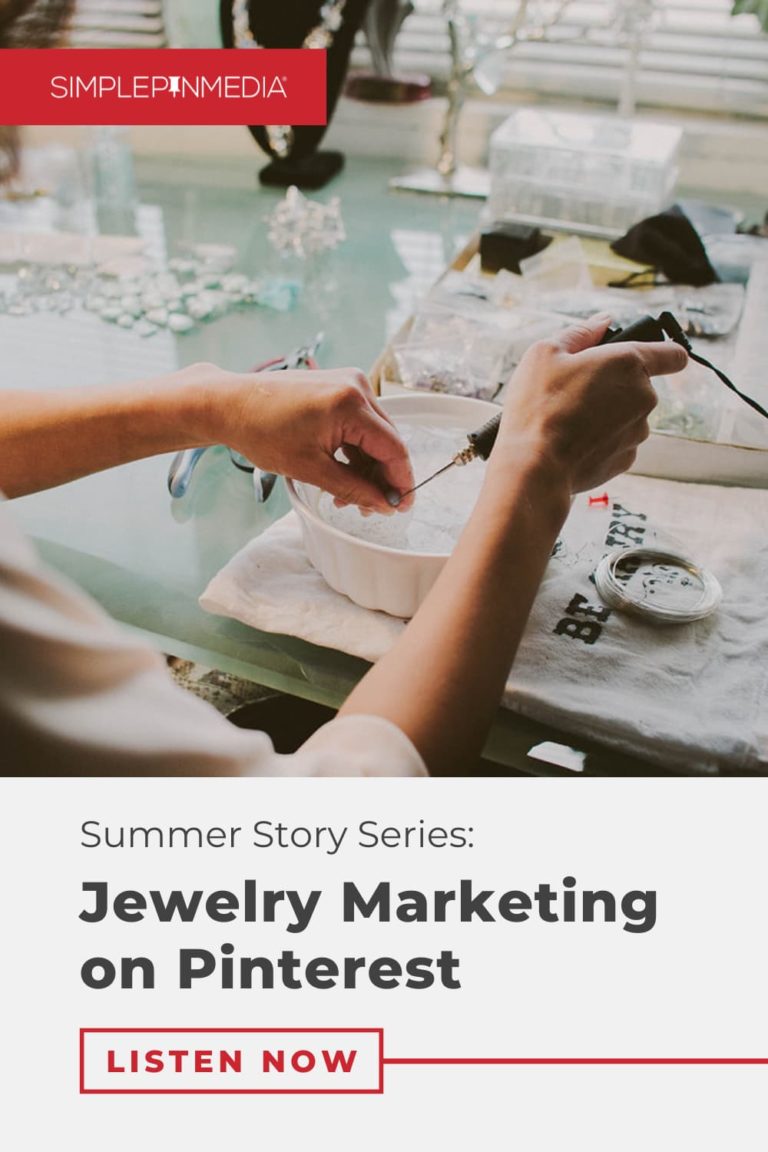In this episode, today we are going to be talking about how to market your YouTube channel using short-form videos on Pinterest. Can they work together? In other words, can a short-form video clip on Pinterest drive traffic to your long-form video on your YouTube page? We’ve often said no, but recently we conducted an experiment with our own YouTube content and found some more information surrounding the topic.
Let’s dive into our recent study on how this worked for our company.

Can Pinterest Drive Traffic to YouTube?
The short answer is yes, Pinterest can be a tool to drive traffic to your YouTube channel. It hasn’t always been that way though. In the past, video hasn’t really been a thing on Pinterest. But lately, that’s been changing, and we wanted to see for ourselves if using short-form videos on Pinterest drives traffic to YouTube. Today Tabby, the Simple Pin Media Social Media Manager is with us to walk through an experiment she conducted and give you some high-level ideas, tips, and questions that she asked so you can decide if this is something you want to test for yourself.
user experience from pinterest
Tabby has run our Simple Pin YouTube channel for a little over a year, and one of the most common questions she has been asked is “Can you drive traffic from Pinterest to YouTube?” For a long time, we’ve always put it in the bucket of Pinterest to Instagram. Meaning, don’t do it. The app-to-app integration has been a little bit clunky. However, after testing it in-house with both Apple and Android users, Tabby found that you can in fact use Pinterest to drive traffic to your YouTube Channel IF you follow best practices.
When a user is on a YouTube video that they would like to share to Pinterest, and they hit the “Share” button, there are several options for sharing to different social media platforms, one of which is “Share to Pinterest”. This is the least effective way to drive traffic because it will only grab the thumbnail image of the video, which is often a rectangle. Instead, best practices would be to create video pins either taking a clip from the actual long-form video OR creating a video of you summarizing what you talk about in the YouTube video, along with a little tip or something enticing the pinner to click through to the whole video.
In addition to creating video pins, Tabby thinks you should also be following Pinterest’s best practices by pinning standard image pins that link to your videos. Make sure to add a call to action on the pin. It can be as simple as “watch now”. Additionally, your pin should have text overlay with the name of your video like any other standard image pin.
Related: Pinterest Best Practices – Pin Images
Repurposing YouTube Videos for Pinterest
Repurposing your YouTube videos for Pinterest might sound like a time-consuming task, but don’t let that deter you because it is worth it! Tabby mentions that it takes her about 15-20 minutes to create a couple of standard image pins for each YouTube video. Creating video pins does take a little more time, but the good news is you can use videos created for Pinterest on Instagram as well. So you are killing two birds with one stone!
As far as the process goes for how to create these video pins, here are a few tips:
- We use iMovie to pick and choose which clip to take from the long-form video. We suggest picking a clip that includes a quick tip or a cliffhanger moment to use as an enticer for the audience.
- Upload the video clip into the app InShot to crop it so it fits vertically in a short-form video format.
- Upload the video to Pinterest and Instagram making sure to link it to your long-form YouTube video
The difference comes when uploading to each platform because the audience changes. On Instagram, Tabby suggests making captions fun and simple (i.e. “Isn’t that cool?” or “Isn’t she funny?”). When uploading to Pinterest you want the description to be more educational. Make sure to give a helpful tip or solve the user’s problem. What’s the thing that’s going to get the AHA?
Related: Short-form video for Pinterest
Is SENDING PINNERS TO YOUTUBE worth it?
This whole experiment started back when Tabby had a question roll in from the Pinterest Business Community about using Pinterest to send people over to YouTube. To first test whether you could use Pinterest to drive traffic to YouTube, she created a sample pin and uploaded it to one of Simple Pin’s YouTube videos. After about a week, she noticed that the pin had gotten five outbound clicks. She decided to keep going with it and from then on, has kept those pins as part of her weekly workflow.
Tabby claims that driving traffic from Pinterest to YouTube does work. If your goal is to grow your YouTube channel, and you make the majority (if not all) of your standard image pins and video pins link to your channel, it will do well for you.
Another finding was that while potentially valuable for many businesses, for Simple Pin Media, driving traffic from Pinterest to YouTube seems to work very minimally. She notes that this is due to the fact that our number one goal is not to drive traffic to our YouTube channel. We put priority on pinning our website, our blog posts and our landing pages, opt-ins. If that was our goal, she could see this being an excellent spoke in the wheel of all our traffic avenues.
Related: 3 Keys To Creating Videos That Convert
Why Pinterest and YouTube work together
Unlike Instagram, YouTube is an educational platform just like Pinterest. People visit YouTube and Pinterest to learn or find inspiration. Whereas on Instagram it’s very timely and it’s very much focused on influencers. On YouTube, you can watch a video from four years ago and still get value from it. The same is true for Pinterest content – it’s evergreen. Whereas if you were to watch an Instagram story of someone from four years ago it would be totally different or it just wouldn’t connect.
If you’re a YouTube content creator and you don’t have a website, Tabby’s advice would be to prioritize Pinterest as a traffic driver to your channel. But if you already have a website, you now have the option to send them to two places. Plus, Tabby suggests adding your videos to some of your most highly trafficked pages from Google. If you embed the YouTube video into your blog post, the views from your website still count on YouTube.
One additional note, the one downfall with sending your Pinterest audience over to YouTube is that you can’t claim your YouTube channel on Pinterest.
Related: Creating a Pinterest Video Strategy That Works
ACTION STEPS FOR growing your Youtube channel
If growing your YouTube channel is your goal, here is the best strategy:
- Create one or two standard image pins for the latest video that you’ve created. But remember to keep Pinterest’s best practices in mind when you’re creating a pin that leads to YouTube.
- Then put together short clips from your YouTube video. Creating 2-3 short clips allows you to space out your video pins and link back to the same video a couple of different times.
- Upload to Pinterest as a video pin.
- Check your YouTube analytics monthly.
A special gift for you!
We want to make this easy on you so we’re giving you one of our Pinterest for YouTube templates for free! Drop your name and email and we will send over your template via email.
It’s worth noting that just as YouTube takes time to build, and Pinterest takes time to build; the two crossovers are going to take time to build, too. But this is such a cool way to leverage the growth of your YouTube channel with the growth of Pinterest.
We’d love to hear from you! Leave a comment on this blog post, or send us a DM on Instagram. We’d love to help you determine what Pin format is right for you, or where you should start.
Simple Pin Products and Resources:








